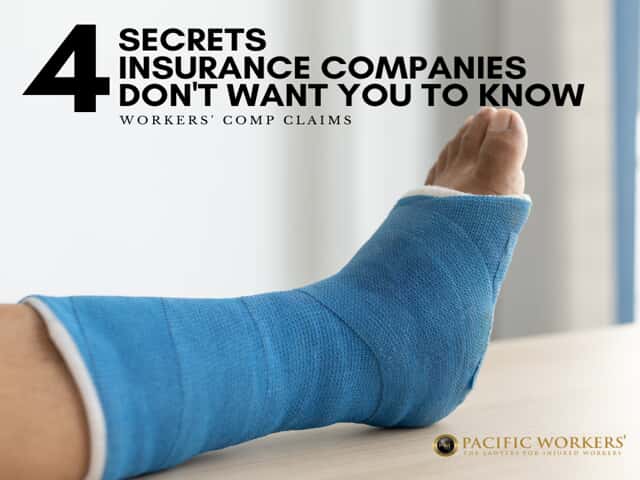
The first appointment you have after being injured at work is the most important appointment for you workers' compensation claim. We have included a few tips to help you make the best out of your first doctor visit.
1. Be Specific
Letting the doctor know exactly where you got injured at work, what is hurting you is crucial. If you don't include every ache and pain, it can cause the entire claim to be dropped. If you injured your knee and back in a fall and failed to report the pain on your back and only revealed the knee injury. The insurance carrier will immediately deny any type of back claim a week or two down the line.
You have to be specific about how you complain of pain. Don’t say “I hurt all over, my entire back hurts.” Instead give definite information such as, “I have severe pain in my lower back. I have a few symptoms, numbness and tingling going down my legs.”
There have been cases that revolved around, “Did she complain of pain inside her knee or outside of her knee? Because if it was pain outside of the knee, then I don’t think that this tear was related.”
When talking to your doctor about your pain and injury you do not have to use medical terms. Being as specific as possible is good enough. “Look, my legs are numb,” or, “My left leg is numb,” or “My right leg hurts more than my left.” Being vague will not get you good treatment because the doctors will not know what to treat at that point in time.
2. Give complete information
Let the doctor know exactly what you injured and what hurts on your body. Don’t fall into the trap of, “Well, it’s my back that’s really hurting. The knee isn’t hurting that much, I’m not going to report the knee.”
Make sure you list every part of your body that is hurting at all. It is very important that you do this at every visit.
3. Make sure everything is documented.
Make sure the doctor you are seeing is actually writing everything down. The best way to make sure your injuries are documented is to ask for a pain diagram. Pain diagrams are virtually just a piece of paper that has a figure, a person figure on it, and it requires you to mark the places that you hurt. It is a great way to show your doctor where you hurt yourself at work that day.
If your doctor doesn’t have a pain diagram, a list of your where you hurt and your pain level is also very important.
4. Be Honest and Truthful
When you first appear in front of a doctor, this is a time to be honest, truthful about exactly what happened at work and how you injured yourself, and what body parts you injured. It’s a time to describe the injury and describe it to the best of your ability. Just don’t try to be too specific and guess things that you don’t know. If you don’t know the amount of weights you lifted, don’t say, “I think it was 80 pounds.” Just say, “It was heavy. I don’t know how much it weighed. It weighed a lot.”
There has been cases where somebody said, “I was lifting an 80-pound bags,” and the employer comes back and says, “No, these were only 30-pound bags,” and now you're off to court, fighting over something you didn’t have to had you not guessed.
We are Northern California's Premier Workers' Compensation and Personal Injury Law Firm. We represent First Responders, Health Care Workers, Construction Workers, Delivery Workers, Warehouse Workers, and the hard-working people that keep our community moving in their Fight for Justice against the Insurance Companies.
With over 250+ Five Star Reviews, an incredible staff of caring, well-trained, advanced technology for superior client communication, a track record of an over 98% win rate and giving back to our community through the Pacific Workers' Foundation, it is easy to see why Pacific Workers' is the go-to law firm for all injured workers in Northern California. Offices in Oakland, Concord, Stockton, and Sacramento.
If you or a loved one needs our help or just have a question, give us a call 800-606-6999.
